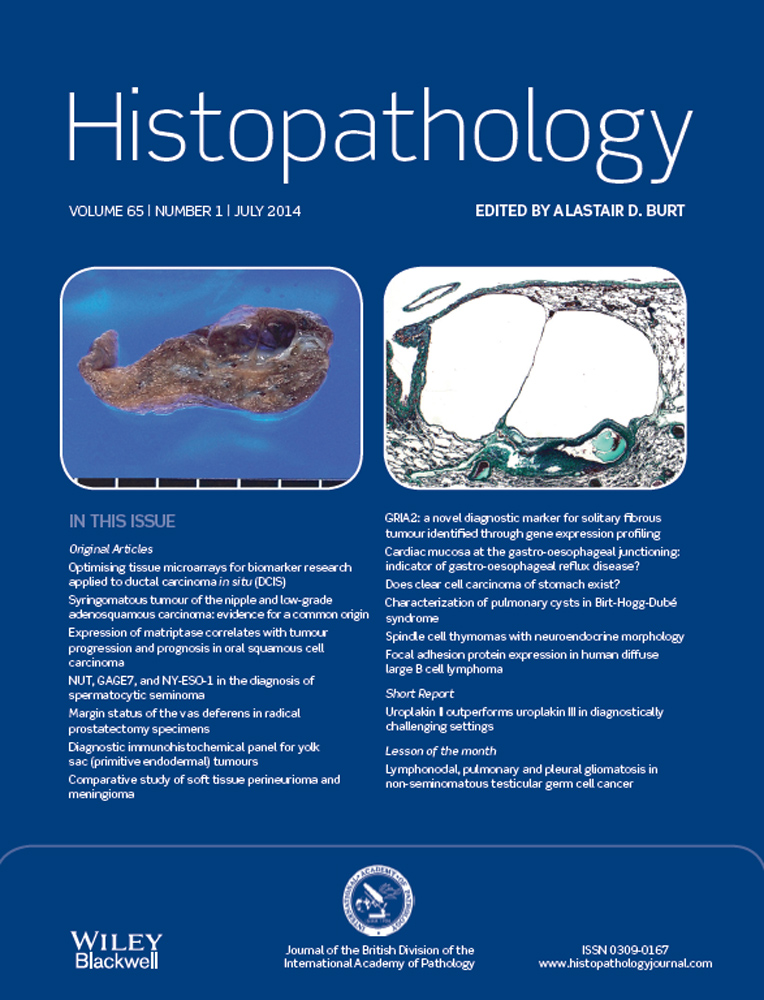GRIA2 is a novel diagnostic marker for solitary fibrous tumour identified through gene expression profiling
Abstract
Aims
The NAB2–STAT6 fusion was recently identified as a consistent finding in solitary fibrous tumour (SFT), resulting in nuclear expression of the C-terminal part of STAT6. Gene expression studies of SFT revealed high expression of the GRIA2 gene. The aim of this study was to examine GRIA2 expression in SFTs and other soft tissue tumours to evaluate its diagnostic utility.
Methods and results
Immunohistochemistry was performed on 375 soft tissue tumours. In total, 84 of 105 (80%) SFTs, including 86% of malignant SFTs and 100% of dedifferentiated SFTs, were positive for GRIA2. One SFT known to harbour the NAB2–STAT6 fusion but that was negative for STAT6 by immunohistochemistry was positive for GRIA2. It is of note that 93% of SFTs received in the last 3 years were positive for GRIA2, as compared with only 70% of older cases. The only other tumours that expressed GRIA2 were 15 of 20 (75%) cases of dermatofibrosarcoma protuberans (DFSP), four of nine (44%) myoepitheliomas, one synovial sarcoma (<1% of cells), and one schwannoma.
Conclusions
GRIA2 is a useful marker for distinguishing SFT from most mimics. Among other CD34-positive tumours, GRIA2 is also expressed in DFSP; however, clinical and histological features aid in their distinction. GRIA2 shows a limited distribution in other soft tissue tumours.




